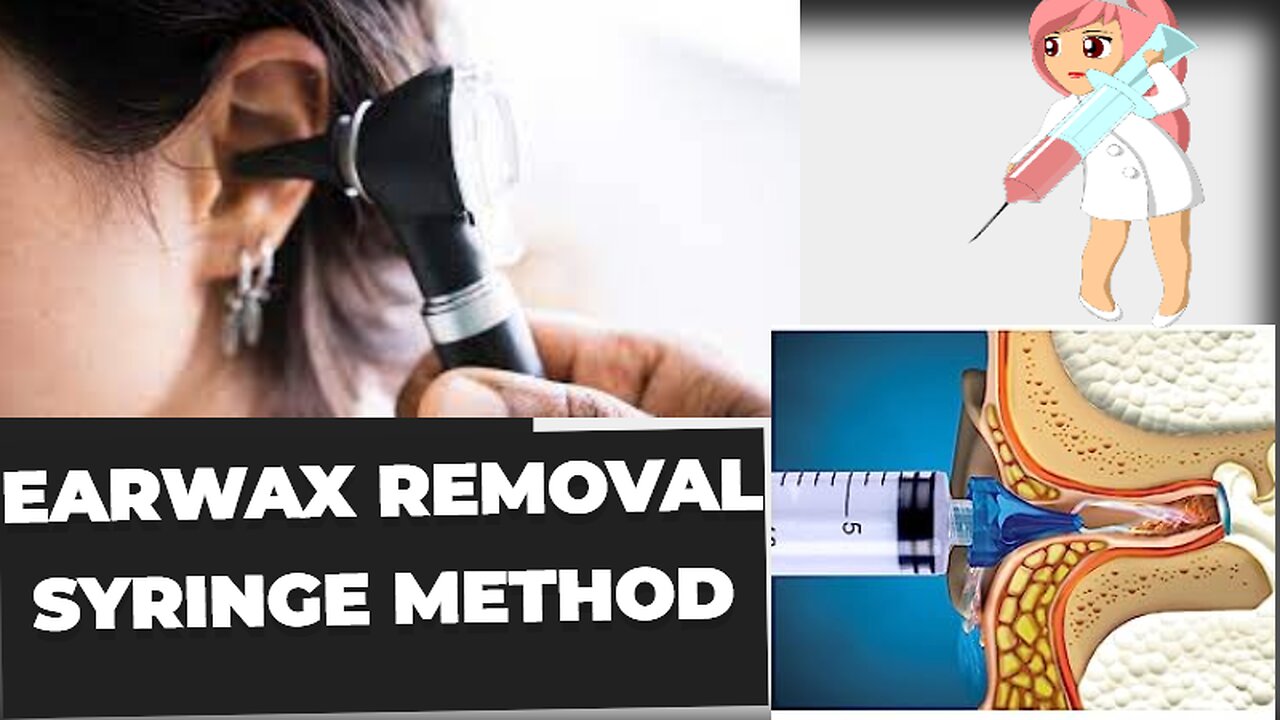Premium Only Content

Stop suffering from blocked ears with this easy DIY solution
I'm not a medical professional, but I can offer some general information on earwax removal using a DIY syringe method. However, it's important to note that earwax removal should be done with caution, and if you're unsure or experience pain, discomfort, or other concerning symptoms, it's best to consult a healthcare professional for proper guidance and treatment.
Here are the general steps for earwax removal using a DIY syringe method:
Materials you'll need:
Bulb syringe or ear syringe
Warm water (body temperature)
A few drops of over-the-counter earwax removal drops (optional)
Steps:
Wash your hands thoroughly to ensure cleanliness.
If you have over-the-counter earwax removal drops, you can use them according to the package instructions. Typically, you'll tilt your head to the side and place a few drops in the affected ear. Wait for a few minutes to allow the drops to soften the earwax.
Fill the bulb syringe or ear syringe with warm (body temperature) water. Ensure the water is not too hot or too cold, as extreme temperatures can cause dizziness or discomfort.
Tilt your head to the side so that the affected ear is facing upward. This will help the water flow into the ear canal more easily.
Gently insert the tip of the syringe into your ear canal. Be very careful not to insert it too deeply, as this can damage the eardrum. Stop if you feel any pain or discomfort.
Slowly and gently squeeze the bulb syringe to release a stream of warm water into the ear canal. The water should flow in gently and then back out, carrying the softened earwax with it.
Repeat this process a few times, allowing the water to flow in and out of your ear. You can use a towel or tissue to catch any excess water that comes out.
After the procedure, tilt your head to the side to allow any remaining water to drain out.
If necessary, you can use a clean, dry, and soft cloth to gently wipe the outside of your ear.
Do not insert any objects like cotton swabs or Q-tips into your ear canal, as this can push the earwax deeper or even damage the eardrum.
If you experience pain, discomfort, or if you suspect you have a blockage that isn't resolving with these methods, it's crucial to seek professional medical help. A healthcare provider or an ear specialist (otologist or otolaryngologist) can safely and effectively remove stubborn or impacted earwax using specialized tools and techniques. They can also examine your ears to rule out any underlying issues.
-
 2:45:33
2:45:33
Sgtfinesse
14 hours agoMerry Christmas Night
84.3K19 -
 3:51:18
3:51:18
tacetmort3m
1 day ago🔴 LIVE - (MERRY CHRISTMAS) TIME TO SPREAD DEMOCRACY - HELLDIVERS 2 OMENS OF TYRANNY
49.9K2 -
 2:46
2:46
BIG NEM
17 hours agoDiscovering RAKIJA: The Holy Liquer of the Balkans
36.3K3 -
 1:11:38
1:11:38
Film Threat
22 hours agoCHRISTMAS DAY CHILL STREAM WITH CHRIS GORE | Hollywood on the Rocks
154K33 -
 14:22:40
14:22:40
The Quartering
1 day agoYule Log Christmas MAGA Edition With Memes! Come Hang Out!
242K32 -
 38:41
38:41
MYLUNCHBREAK CHANNEL PAGE
1 day agoTimeline Begins in 1800? - Pt 1 & 2
120K73 -
 1:23:41
1:23:41
Game On!
1 day ago $14.11 earnedNetflix NFL Christmas Games Preview and Predictions!
102K13 -
 2:05:07
2:05:07
Darkhorse Podcast
1 day agoWhy Trump Wants Greenland: The 257th Evolutionary Lens with Bret Weinstein and Heather Heying
330K909 -
 8:50:58
8:50:58
Right Side Broadcasting Network
1 day ago🎅 LIVE: Tracking Santa on Christmas Eve 2024 NORAD Santa Tracker 🎅
425K73 -
 2:48
2:48
Steven Crowder
1 day agoCROWDER CLASSICS: What’s This? | Nightmare Before Kwanzaa (Nightmare Before Christmas Parody)
372K13